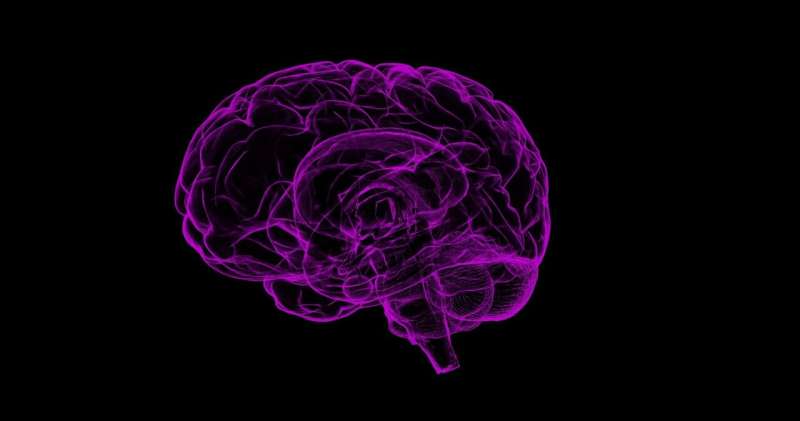
Neuroinflammation can worsen outcomes in stroke, traumatic brain injury or spinal cord injury, as well as accelerate neurodegenerative diseases like ALS, Parkinson’s or Alzheimer’s. This suggests that limiting neuroinflammation may represent a promising new approach to treat neurological diseases and neuropathic pain that are driven by neuroinflammation.
In a preclinical study published in the journal Glia, Peter King, M.D., and Burt Nabors, M.D., show that their small molecule drug, SRI-42127, can potently attenuate the triggers of neuroinflammation. These experiments in glial cell cultures and mice now open the door to testing SRI-42127 in models of acute and chronic neurological injury.
Glial cells are the non-neuronal cells of the central nervous system, or CNS, that help support and protect neurons. One of the types, microglia, are brain macrophages that respond to injury or infection. “Microglia and astroglia are key cells in the central nervous system that—when activated—drive neuroinflammation by secreting toxic inflammatory mediators, including cytokines and chemokines,” King and Nabors said.
King and Nabors, both professors in the University of Alabama at Birmingham Department of Neurology, have collaborated for 25 years to study the mechanisms that trigger neuroinflammation and the role of neuroinflammation in neurological injury, degenerative disease and cancer. They say this current study builds on their prior findings that microglia and astroglia cells rely on a key RNA-binding protein called HuR that protects the messenger RNAs encoding inflammatory mediators from degradation and promotes their translation into proteins.
Neuroinflammation occurs when activated microglia and astrocytes in the brain or spinal column secrete cytokines and chemokines like IL1β, IL-6, TNF-α, iNOS, CXCL1 and CCL2. The messenger RNAs for those pro-inflammatory signaling proteins contain adenine- and uridine-rich elements, or AREs, that govern their expression.
King, Nabors and UAB colleagues have previously shown that HuR, an RNA regulator protein that binds to AREs, plays a major positive role in regulating the inflammatory cytokine production, making it a major control point in neuroinflammation.
HuR normally concentrates in the nuclei of glial cells. However, when glial cells are activated, HuR translocates out of the nucleus and into the cell cytoplasm, where it can boost production of neuroinflammatory cytokines and chemokines.
In previous work, the UAB researchers showed that HuR translocates out of the nucleus of astrocytes in the acute CNS diseases spinal column injury and stroke. They also showed that it translocates out of the nucleus in microglia in the chronic CNS disease ALS, or amyotrophic lateral sclerosis.
Importantly, monomer HuR cannot pass through the nuclear envelope that acts as a regulatory membrane barrier between the nucleus and the cytoplasm. Only HuR dimers—made up by the coupling of two single HuR molecules—are able to translocate from nucleus to cytoplasm. This knowledge permitted collaborative research by Southern Research, of Birmingham, Alabama, and UAB, using high-throughput screening, to identify the small molecule drug SRI-42127 that inhibits dimerization of HuR.
In the current study, King, Nabors, Natalia Filippova, Ph.D., and UAB colleagues tested the biological relevance of SRI-42127, using lipopolysaccharide, or LPS, to activate glial cells to initiate the inflammatory cascade. The UAB researchers found that treatment with SRI-42127 suppressed HuR translocation from the nucleus to the cytoplasm in LPS-activated glial cells, both in tissue culture and in mice. SRI-42127 also significantly attenuated the production of proinflammatory mediators, including the cytokines IL1β, IL-6, TNF-α and iNOS, and the chemokines CXCL1 and CCL2.
Furthermore, SRI-42127 suppressed microglial activation in mouse brains, and it attenuated the recruitment of immune-cell neutrophils and monocytes into the CNS from outside the blood-brain barrier. Such an entry of neutrophils and monocytes can exacerbate inflammation in the brain or spinal cord. In summary, SRI-42127 penetrated the blood-brain barrier and quickly suppressed neuroinflammatory responses.
“Our findings,” King and Nabors said, “underscore HuR’s critical role in promoting glial activation and the potential for SRI-42127 and other HuR inhibitors to treat neurological diseases driven by this activation.”
In unpublished work in collaboration with Robert Sorge, Ph.D., associate professor in the Department of Psychology, UAB College of Arts and Sciences, King and Nabors have found potential beneficial effects of SRI-42127 to reduce neuropathic pain, a condition that is triggered by microglial-induced neuroinflammation. “This would be a non-opioid approach to treating pain,” they said.
Any future potential clinical treatments will require finesse.
“Therapeutic targeting of glia in CNS disease is a balancing act since these cells also exert neuroprotective and neuroplastic effects, depending on the phase of recovery from CNS injury or stage of neurodegenerative disease,” King and Nabors said. “In the initial phases after spinal cord injury, traumatic brain injury or stroke, the pro-inflammatory activation of glia worsens secondary tissue injury and triggers pathways of chronic neuropathic pain, in contrast to the more chronic phases where glia become protective. In neurodegenerative processes like ALS and Alzheimer’s, glia also play changing roles during the course of the disease.”
Co-authors with King, Nabors and Filippova in the current study, “SRI-42127, a novel small molecule inhibitor of the RNA regulator HuR, potently attenuates glial activation in a model of lipopolysaccharide-induced neuroinflammation,” are Rajeshwari Chellappan, Abhishek Guha, Ying Si, Thaddaeus Kwan, Xiuhua Yang, Anish S. Myneni, Shriya Meesala and Ashley S. Harms, UAB Department of Neurology.
In their long collaboration, King and Nabors have used glioblastoma, a primary brain cancer, as a disease model to study HuR because many of the factors that drive neuroinflammation also promote glioblastoma growth. Nabors has focused on the tumor-suppressive properties of SRI-42127 and its potential use in the treatment of glioblastoma and other cancers.
University of Alabama at Birmingham

